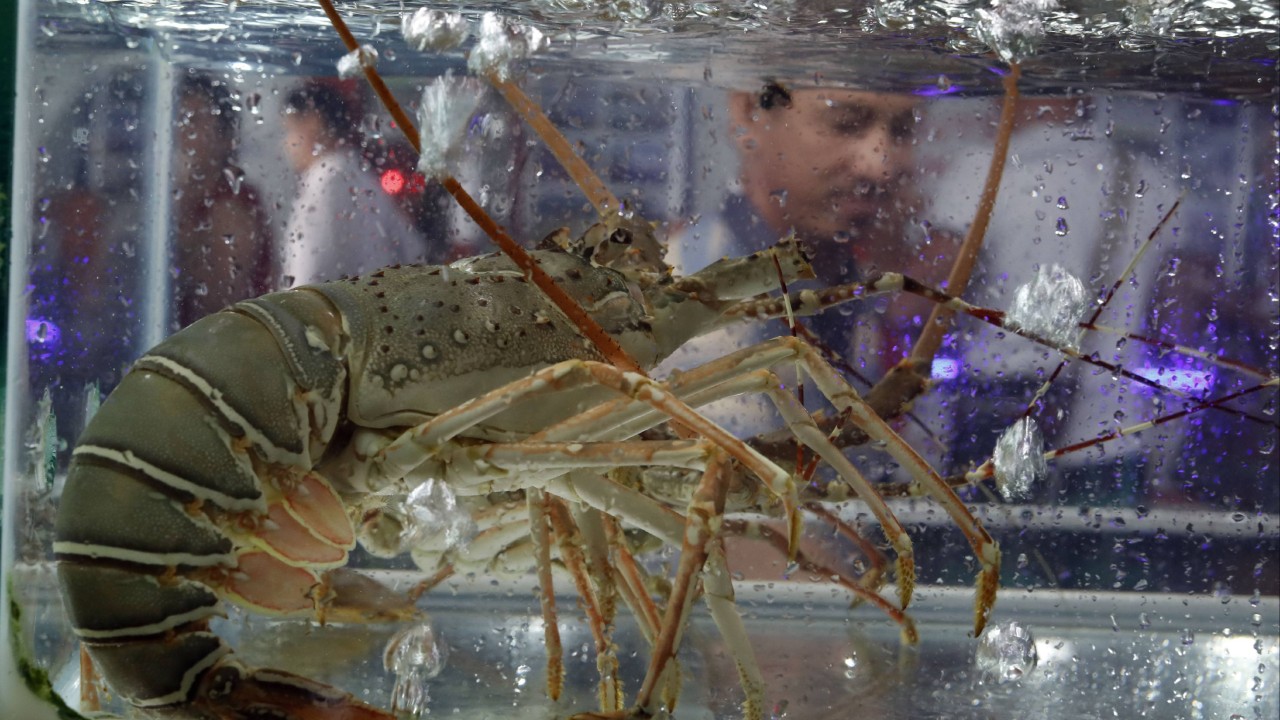China’s ban on Australian lobsters has Asean members clawing way into market
[ad_1]

The door for their lobsters to enter China has opened wider in the nearly three-and-a-half years since Beijing banned lobster imports from Australia in response to calls from Canberra for an inquiry into the origin of the coronavirus. And despite bilateral ties improving since last year, the ban has remained in effect.
The three members of the Association of Southeast Asian Nations (Asean) accounted for 6.8 per cent of China’s total import share last year – doubling the rate from 2019.
Australian rock lobsters face ‘severe’ competition if they return to China
Australian rock lobsters face ‘severe’ competition if they return to China
The increase also came as Beijing has been moving closer to its Southeast Asian neighbours to buffer growing geopolitical complications with the US-led West, while the vast market potential of the world’s second-largest economy has continued to attract Southeast Asian exporters to expand their presence.
Customs data shows that Indonesia ranked as the fifth-largest lobster exporter to China, with the value of such shipments reaching US$18.27 million in 2023, up nearly 44 per cent, year on year, and accounting for 2.9 per cent of the market share.
And Thailand, China’s seventh-biggest importer of this seafood, saw its lobster shipments increase 160-fold since 2019, from a total value of US$88,123 to US$14.1 million last year, or a 2.2 per cent market share.
Before China’s import ban on Australian lobsters went into effect in 2020, more than half of its lobsters had come from Australia in 2019.
“China is a major consumer market, and Australia’s withdrawal gives seafood exporters within the [Southeast Asian] region vast opportunities to target this seafood market,” said Song Seng Wun, an economic consultant with CGS CIMB Securities, a financial services firm in Singapore.
Due to the ban, large volumes of lobsters from Australia have also become more affordable for Asean consumers, Song said.
However, China’s lobster imports from Vietnam, which ranked as the eighth-biggest source, fell drastically last year, dropping from nearly 39 per cent of the total in 2022 to 1.7 per cent last year.
“Vietnam’s lobster industry lacks the same well-established farming procedures and regulations as Australia’s, and some farmers fish for wild lobsters – a clear violation of China’s animal-protection laws, Song added. “This is why last year China banned many imports of Vietnamese lobsters.”
In 2019, Vietnam accounted for just 1.7 per cent of China’s lobster imports.
Mainlanders shell out for smuggled Australian lobsters via Hong Kong
Mainlanders shell out for smuggled Australian lobsters via Hong Kong
US exporters have also seized on the Chinese market amid Australia’s exit. The US accounted for nearly 16 per cent of China’s lobster market share last year, up from 2.9 per cent in 2019, and the related trade value grew 3.5 times to US$97.33 million.
However, these rising imports still have not filled the hole left by Beijing’s blockade on Australia. The value of China’s rock lobster imports hovered above US$900 million in the three years before the ban, but since 2021, it has dropped to around US$600 million.
Last year, the value of China’s lobster imports was US$629 million, down 31 per cent from 2020, official figures show.
China lifted its trade ban on Australian coal last year as relations between the two countries improved, and the move led to market speculation that Australian lobsters could be allowed back into China.
“Unless this mini trade war is resolved soon, there could be irreversible changes that will negatively impact Australian lobster exporters,” said Jayant Menon, a senior fellow at the ISEAS-Yusof Ishak Institute in Singapore.
Menon explained that, when new trading relationships with alternative suppliers are firmly established, there are costs associated with switching back, even if strained bilateral relations are fully restored.
China has also been exploring the cultivation of locally raised varieties of overseas lobsters to meet domestic demand.
China has farmed rock lobsters – like those from Australia – in its northwestern Xinjiang Uygur autonomous region since 2021, by building ponds that simulate seawater.
And this month, China shipped an Eastern European variety of lobster, which was found indigenously in Xinjiang, to the eastern regions of Zhejiang and Jiangsu for farming.
King prawn, lobsters on offer as rural Xinjiang develops seawater aquafarming
King prawn, lobsters on offer as rural Xinjiang develops seawater aquafarming
For its part, Australia is still holding out hope that its lobsters will be welcome back in China someday.
“The lobster industry has worked hard to optimise the efficiency of supply chains between Australia and China to get the product to market as fresh as possible,” said James Clarke, president of the Australia China Business Council (West Australia). “The council believes that premium Australian products still provide exceptional quality and value for Chinese consumers.”
“The council understands that the issues surrounding the live lobster trade are different to barley and wine,” Clark said, referring to other targeted Australian exports to China. “However, we hope that with increasing good faith in the bilateral relationship, breakthroughs may be on the horizon.”
Additional reporting by Kandy Wong
[ad_2]
Source link

